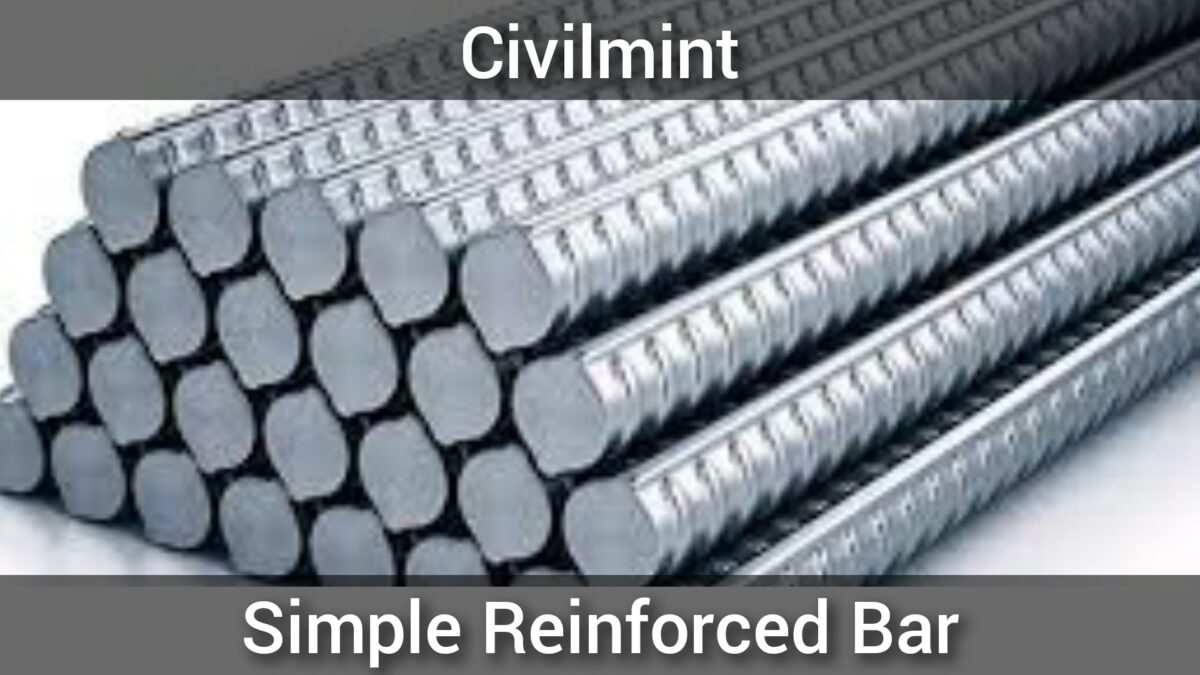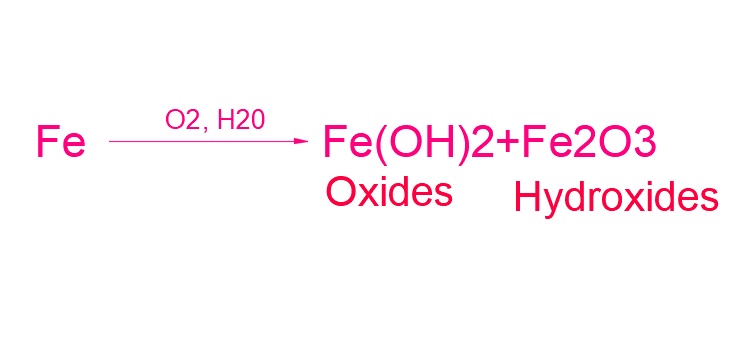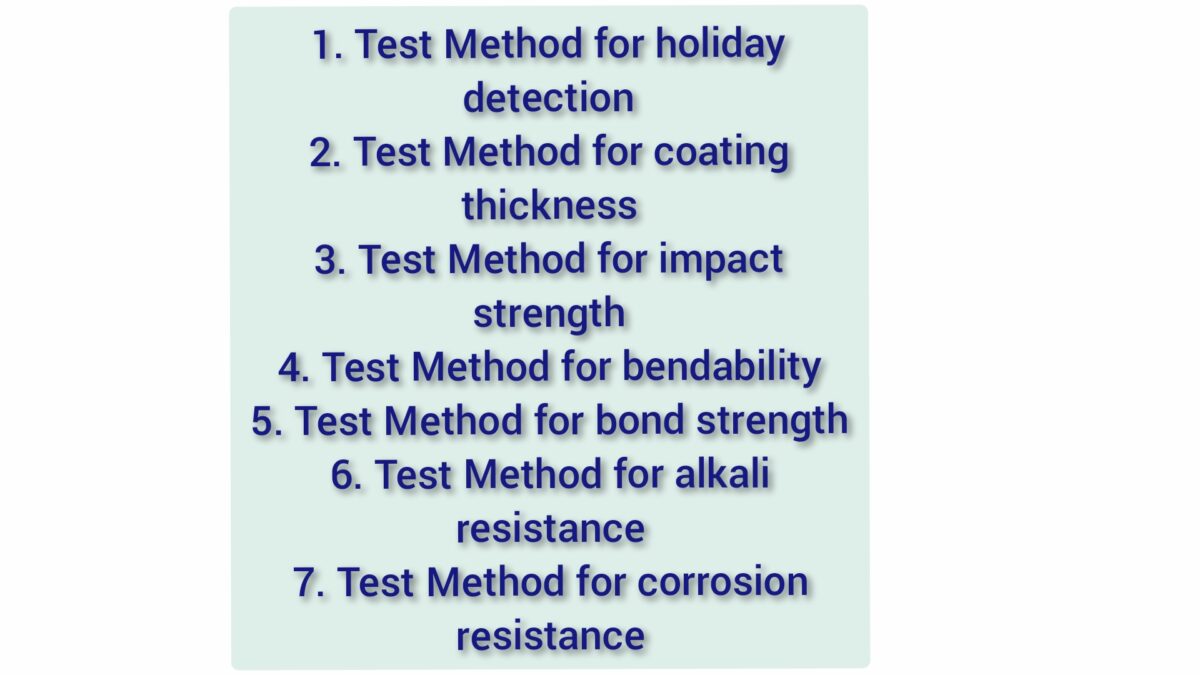Before starting a description of Epoxy Coated Rebar, we will know about Rebar. Rebar is an abbreviation used for reinforcement bar.
Rebar is important to compensate for the fact that whilst concrete is very good to resist compressive force, it is relatively weak in tension. By casting rebar into concrete, it is able to carry tensile loads and so enhance the overall strength of a structural member.
Table of Contents
What Is Rebar?
A rebar or Reinforcement bar is a steel bar or mesh of steel wires that work as a tensile member in the structure to help structure under tensile load.

What Is Epoxy Coated Rebar?
Epoxy Coated Bars use normal reinforcement bars and are coated with epoxy having thicknesses of a few microns.

Corrosion-resistant reinforcement bars are utilized in place of traditional reinforcing bars to strengthen the concrete and safeguard against corrosion. The epoxy coating is not applied on the construction site, it is applied in a factory to the steel prior to shipping to ensure corrosion resistance. Epoxy-covered steel reinforcing bars can be used for any structural member subjected to corrosive conditions. It is also applicable for structural members exposed to deicing salts or marine waters.
Explanation
The manufacturer applies a barrier system to reinforce the Epoxy Coated Rebar, which is intended to prevent erosion of the bar’s surface by moisture and chlorides. This type of rebar is gaining popularity in environments where accelerated corrosion is a concern, as it provides extra protection and improves the rebars’ corrosion performance.
Epoxy coatings are highly durable and resistant to many corrosive substances, providing excellent protection against abrasion, turbulence, corrosive fluids, and extreme temperatures. This feature is especially advantageous in marine structures where corrosion resistance is crucial.
The coating used for Epoxy Coated Rebars is known as Fusion Bond, which is a dry powder that is electrostatically applied to hot steel bars that have been cleaned. The powder undergoes various chemical processes to cure and form a protective film. The protective film contributes to the quality of construction and enhances the longevity of the coated rebars.
A high-quality Epoxy Coated TMT Bar should have a uniform coating, be chemically stable, and adhere to a high pH environment. Using this type of rebar in construction projects ensures that the reinforcing bars last longer, providing enhanced corrosion resistance and contributing to the overall quality of the structure.
Epoxy Coated Rebar Manufacturing
The process of manufacturing Epoxy Coated Rebars involves four crucial stages: surface preparation, induction preheating, fusion with epoxy powder application, and curing.
The coating operation is carried out by passing the straight steel bars through the application process on a rapidly moving conveyor. Specialized coating operation units may use a special hanger system.
The steps involved in the manufacturing process are as follows:
- The process begins by spreading out the rebars onto a shakeout table or fluidization bed to be transferred to a conveyor system.
- The steel undergoes a visual inspection to check for oil, grease, and other contaminants.
- The steel is then moved towards a blast cleaner, where the contaminants are removed.
- The steel is now ready for proper coating.
- The bars pass through a powder spray booth where spray nozzles embed dry epoxy powder.
- Electrostatic charges are then applied to the powder particles, resulting in an even and complete coating.
- As the dry powder heats up, it melts and flows into the peaks and valleys of the steel, conforming to and covering the bars.
- Following the powder application, the coating is allowed to cool for 30-40 seconds.
- The coating cures to a hardened state and develops most of its beneficial properties.
- An air or water quench often follows the curing period to cool off the bar and facilitate handling.
- The coated bars are then passed through a cooling tunnel, where water is sprayed on the bars to cool them.
- In the last stage, the bars are transferred to the final inspection rack for testing and inspection.
Why We Use Epoxy Coated Reinforcement Bars?
Epoxy Coated Bar is used to resist corrosion in the Reinforcement bars. Iron left in the atmosphere corrodes very easily.

Corrosion is the transition of Iron to its Oxides and Hydroxides in the presence of oxygen and water.
The performance of Epoxy Coated bars is better compared to convention reinforcement bars.
Methods To Check Quality Of Epoxy Coated Rebar
Various quality methods to check the quality of epoxy coated rebar are shown in the figure below.

Advantages Of Epoxy Coated Rebar
- Protection even in cracked concrete.
- Epoxy coated rebar provides resistance against corrosion.
- It increases the life of the structure.
- It gives high performance in humid environments.
- Epoxy coated rebar works well even in the cracked concrete structure.
Applications
- Bridges and overpasses
- Parking structures
- Marine structures
- Dams and water treatment facilities
- Tunnels and underground structures
- High-rise buildings
- Railway structures
- Airport runways
- Nuclear power plants
- Retaining walls
- Industrial buildings
- Stadiums and arenas
- Transmission towers
- Wind turbines
- Water tanks and reservoirs
- Sewage treatment plants
- Chemical plants
- Mining facilities
- Oil and gas refineries
- Hydroelectric power plants
- Theme park attractions
- Agricultural facilities
- Healthcare facilities
- Educational facilities
- Retail buildings
- Residential buildings
- Hotels and resorts
- Sports facilities
- Entertainment venues
- Historical structures
